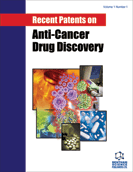
Abstract
Background: Due to the low water solubility of Docetaxel (DTX), it is formulated with ethanol and Tween 80 with lots of side effects. For this reason, special attention has been paid to formulate it in new drug nano-carriers.
Objective: The goal of this study was to evaluate the safety, antitumor activity and tissue distribution of the novel synthesized Raloxifene (RA) targeted polymeric micelles.
Methods: DTX-loaded RA-targeted polymeric micelles composed of poly(styrene-maleic acid)- poly(amide-ether-ester-imide)-poly(ethylene glycol) (SMA-PAEE-PEG) were prepared and their antitumor activity was studied in MC4-L2 tumor-bearing mice compared with non-targeted micelles and free DTX. Safety of the micelles was studied by Hematoxylin and Eosin (H&E) staining of tumors and major organs of the mice. The drug accumulation in the tumor and major organs was measured by HPLC method.
Results: The results showed better tumor growth inhibition and increased survival of mice treated with DTX-loaded in targeted micelles compared to the non-targeted micelles and free DTX. Histopathological studies, H&E staining of tumors and immunohistochemical examination showed the potential of DTX-loaded RA-targeted micelles to inhibit tumor cells proliferation. The higher accumulation of the DTX in the tumor tissue after injection of the micelles compared to the free DTX may indicate the higher uptake of the targeted micelles by the G-Protein-Coupled Estrogen Receptors (GPER).
Conclusion: The results indicate that RA-conjugated polymeric micelles may be a strong and effective drug delivery system for DTX therapy and uptake of the drug into tumor cells, and overcome the disadvantages and side effects of conventional DTX.
Keywords: Docetaxel, G-protein-coupled estrogen receptors, histopathology, raloxifene targeted micelles, safety, tissue distribution.
[http://dx.doi.org/10.1016/j.jconrel.2004.01.002] [PMID: 15023471]
[http://dx.doi.org/10.1186/1556-276X-6-354] [PMID: 21711889]
[http://dx.doi.org/10.1016/j.ijpharm.2009.06.004] [PMID: 19524029]
[http://dx.doi.org/10.1166/jnn.2009.450] [PMID: 19435095]
[http://dx.doi.org/10.3797/scipharm.0806-08]
[http://dx.doi.org/10.1631/jzus.B1200098] [PMID: 23225853]
[http://dx.doi.org/10.1155/2011/860376]
[http://dx.doi.org/10.1016/j.supflu.2010.02.005]
[http://dx.doi.org/10.2174/138161210791920487] [PMID: 20618152]
[http://dx.doi.org/10.1016/S1773-2247(05)50015-7]
[http://dx.doi.org/10.1016/j.ijpharm.2006.06.023] [PMID: 16887303]
[http://dx.doi.org/10.1021/mp800051m] [PMID: 18672949]
[PMID: 21931485]
[http://dx.doi.org/10.1016/j.ijbiomac.2015.11.081] [PMID: 26657586]
[http://dx.doi.org/10.1080/10611860802088630] [PMID: 18569286]
[http://dx.doi.org/10.1016/j.steroids.2011.02.018] [PMID: 21354433]
[http://dx.doi.org/10.3389/fendo.2014.00066] [PMID: 24834064]
[http://dx.doi.org/10.1016/j.tips.2008.01.001] [PMID: 18262661]
[http://dx.doi.org/10.1210/en.2004-1064] [PMID: 15539556]
[http://dx.doi.org/10.1006/geno.1997.4972] [PMID: 9367686]
[http://dx.doi.org/10.1158/1078-0432.CCR-06-0860] [PMID: 17085646]
[http://dx.doi.org/10.1016/j.ajog.2007.01.004]
[http://dx.doi.org/10.1016/j.ygyno.2009.05.015] [PMID: 19501895]
[http://dx.doi.org/10.1007/s10637-017-0533-1] [PMID: 29177974]
[http://dx.doi.org/10.1080/03639045.2018.1438462] [PMID: 29436875]
[http://dx.doi.org/10.1016/j.biomaterials.2015.02.108] [PMID: 25890760]
[http://dx.doi.org/10.1007/PL00000229] [PMID: 11713907]
[http://dx.doi.org/10.1016/j.biomaterials.2013.07.037] [PMID: 23896006]
[http://dx.doi.org/10.1158/1535-7163.MCT-14-0052] [PMID: 25239936]
[http://dx.doi.org/10.1016/j.biomaterials.2014.04.099] [PMID: 24836952]
[http://dx.doi.org/10.1021/nn900649v] [PMID: 19761191]
[http://dx.doi.org/10.1016/j.jconrel.2004.12.018] [PMID: 15763623]
[http://dx.doi.org/10.1093/jnci/djr393] [PMID: 21960707]
[http://dx.doi.org/10.1016/j.jconrel.2010.10.027] [PMID: 21044651]
[http://dx.doi.org/10.1016/j.ijpharm.2012.12.032] [PMID: 23287774]
[http://dx.doi.org/10.1016/j.biomaterials.2015.06.017] [PMID: 26106797]
[http://dx.doi.org/10.1016/j.biomaterials.2006.10.002] [PMID: 17126900]
[http://dx.doi.org/10.1016/j.biomaterials.2007.11.029] [PMID: 18093646]
[http://dx.doi.org/10.3109/10717544.2010.520355] [PMID: 20942638]
[http://dx.doi.org/10.1016/j.addr.2004.01.011] [PMID: 15094214]
[http://dx.doi.org/10.1007/s11095-006-9662-5] [PMID: 16550475]
 43
43 3
3


























